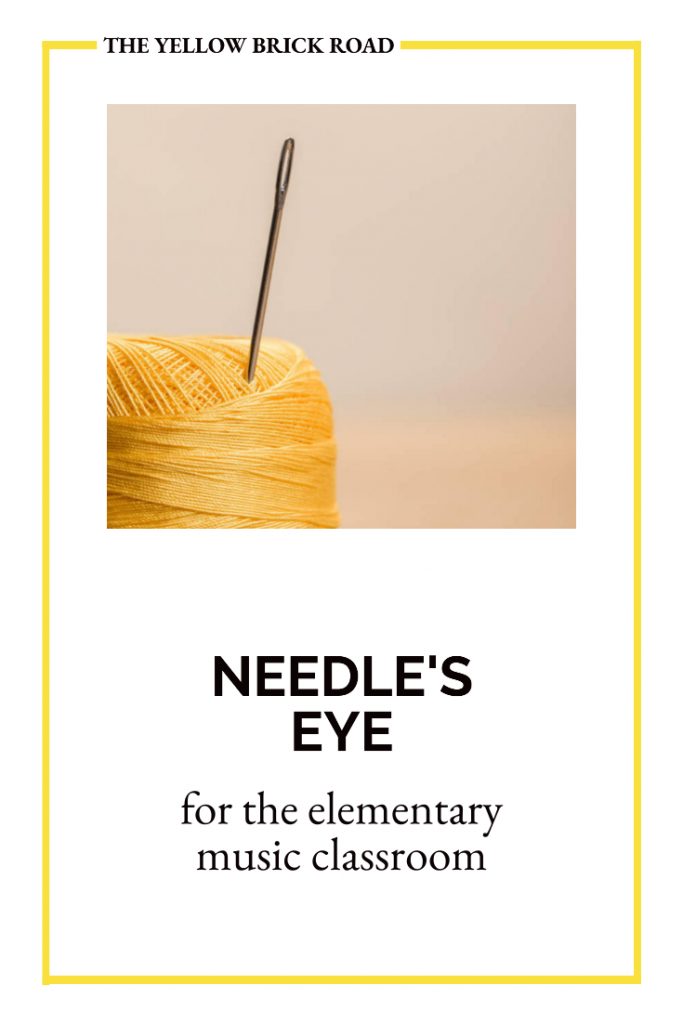Keeping the attention of a large class of kindergarten students, can be a lot like trying to thread a needle. Without intense concentration and purposefulness, you can end up causing yourself pain.
Needle’s Eye provides a fun game, a simple song, and a great head-voice stretch for kindergartners. The accompanying game is played like London Bridge, and the pitch range goes from an E all the way up to a D, which may be a stretch for some of your students.

CIRCLE GAME
Students create a circle, with two students creating the arch or the “needle’s eye” with their arms. The circle or the “thread” passes through the needle’s eye. On the words “pop goes the weasel”, the arch is lowered and a student is caught. That student then replaces another in the arch, and the game continues.
Connect the song and game to real life by bringing in a large, plastic threading needle and some yarn. Threading needles are perfect for this because they don’t have a sharp point. You can get a cheap (and super safe) threading needle from Oriental Trading ($3.59) HERE.
You can demonstrate threading the needle and allow your students to try as well. Then, after playing the game, you can talk about how the game resembled threading a needle.
SINGING FOR YOUR STUDENTS
The keys of F and G are my go-to for young students. Happily, most of my folk song collections are pitched in these keys already. Also, John Feierabend has spoken on the importance of using keys that keep students in their head voices.
I’ve written many times about Feierabend’s insistence that teachers sing for their students, and not with them. In fact, it’s one of his “non-negotiables”.
If a teacher does sing with the class, students will echo each note one at a time, a split second after the teacher, rather than thinking a tune. Without the ability to think and retain tune, students will never become independent singers.
Feierabend, 2018
That’s why simple songs, such as Needles’ Eye, are fantastic for the elementary music classroom. Their length and repetition make it easier for students to retain the tune, and with games, it becomes even easier. You simply sing the song through several rounds of the game as students play and listen. Then, when you think they’re ready, you ask them to take over singing for you. If they’re unable, it simply means they haven’t heard it enough. In this case, you can continue the game, or choose to play it again on another day.

